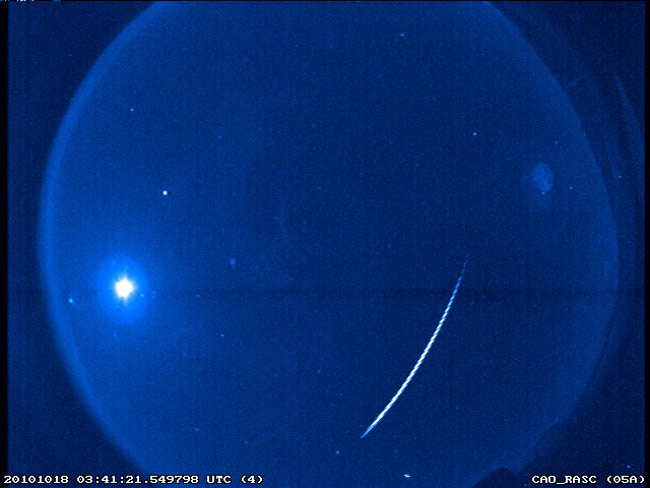Mystery Boom in Virginia Likely a Meteor

Tuesday evening, residents across Virginia Beach, Norfolk and Suffolk, Va., dialed 911 to report what sounded what a large explosion. Today, a NASA scientist explained that it might have been a meteor.
The area is home to several military bases, so residents are accustomed to loud sounds. This was out of the ordinary, though; several 911 callers reported a loud noise that rattled their screen doors and windows. One woman told the local television station, WAVY, that it felt like an earthquake.
That's not uncharacteristic for a sonic boom created by a meteor, said Joe Zawodny, a senior research scientist at NASA Langley Research Center.
"A sonic boom is pressure wave, and it mimics an explosion," Zawodny told Life's Little Mysteries, a sister site of SPACE.com. "They can be quite forceful, and can definitely rattle walls and windows."
Meteors come in different flavors. Some are iron meteorites, which melt and burn on their way down but remain intact, Zawodny said. The sound is most consistent with a golf ball- size rock of this nature traveling upward of 1,000 mph and leaving a trail of sonic booms as it flies across the sky, most likely quite close to the ground. [Video: Meteors from Halley's Comet]
Or it could have been caused by a more energetic event. "Other things are made of materials that break up on way down. This thing could have come in sizeable and disintegrated, and that energy dissipated as one big boom as it broke down. So it could have actually been an explosion," Zawodny said.
One thing it most likely was not caused by was a supersonic military airplane. "That's always first thing you think of, but that's a very distinctive sound," he said. "You hear a double boom from a plane's sonic boom. And those sonic booms are fairly local and don't occur along a path, as this noise did."
Get the Space.com Newsletter
Breaking space news, the latest updates on rocket launches, skywatching events and more!
"There's no doubt in my mind that it's consistent with a supersonic rock, or something else coming in from space," Zawodny said.
Sonic booms from meteors are not a rare event, occurring a dozen times a year over the U.S. This rock was most likely a remnant of a meteor shower associated with Halley's Comet that peaked on May 6, Zawodny said. [Photos of Halley's Comet]
Zawodny pointed out that this explanation is not conclusive, however, unless someone witnessed the meteor's fire trail.
"The only other thing that I've been holding open as possibility — and this would be quite rare — is this could be a result of an atmospheric ducting phenomenon," Zawodny said.
This phenomenon requires just-right weather conditions to create layers in the atmosphere that then act as a wave guide and channel sound waves from one place to another, sometimes over long distances.
"We've had the right temperature profile in the area [to create an atmospheric duct]," Zawodny said. "There could have been an offshore Navy thing that made sound that traveled along the duct inland. It would have had to be a really huge sound, though."
"It's a really remote possibility," he added. "But I'm a scientist, and without conclusive evidence, you gotta have a little wiggle room."
This story was provided by Life's Little Mysteries, a sister site to SPACE.com. Follow Life's Little Mysteries on Twitter @LLMysteries and get space science and exploration news @Spacedotcom and on Facebook.
Join our Space Forums to keep talking space on the latest missions, night sky and more! And if you have a news tip, correction or comment, let us know at: community@space.com.
For the science geek in everyone, Live Science breaks down the stories behind the most interesting news and photos on the Internet, while also digging up fascinating discoveries that hit on a broad range of fields, from dinosaurs and archaeology to wacky physics and astronomy to health and human behavior. If you want to learn something interesting every day, Live Science is the place for you.









